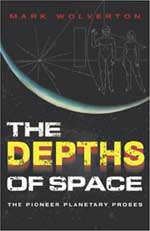Australian researchers have shown that a ground-based telescope in Antarctica can take images almost as good as those from the Hubble Space Telescope, at a fraction of the cost.
“It represents arguably the most dramatic breakthrough in the potential for ground-based optical astronomy since the invention of the telescope,” says University of New South Wales Associate Professor Michael Ashley, who co-authored the Nature paper. “The discovery means that a telescope at Dome C on the Antarctic plateau could compete with a telescope two to three times larger at the best mid-latitude observatories, with major cost-saving implications. Dome C could become an important ‘test-bed’ for experiments and technologies that will later be flown as space missions. Indeed, for some projects, the site might be an attractive alternative to space based astronomy.”
Astronomical observations made by Australian astronomers at Dome C on the Antarctic Plateau, 3250 m above sea-level, prove that the site has less “star jitter” than the best mid-latitude observatories in Hawaii, Chile and the Canary Islands. While Antarctica has long been recognised as having characteristics that make it a potentially excellent site for astronomy, seeing conditions at the South Pole itself (latitude 90 degrees south) are poor due to atmospheric turbulence within 200 – 300 m of the ground.
By contrast, Dome C, located at latitude 75 degrees south, has several atmospheric and site characteristics that make it ideal for astronomical observations. The site’s atmospheric characteristics include low infrared sky emission, extreme cold and dryness, a high percentage of cloud free time, and low dust and aerosol content – features that confer significant benefits for all forms of astronomy, especially infrared and sub-millimetre.
Dome C is 400 m higher than the South Pole and further inland from the coast. Being a “dome” – a local maximum in the elevation of the terrain – it experiences much lower peak and average wind speeds, which has a profound beneficial effect on the performance of astronomical instruments. Like other regions on the Antarctic plateau, it shares the advantages of a lack of seismic activity and low levels of light pollution.
A key issue in considering where to locate new generation ground-based optical telescopes is to choose a site with excellent ‘seeing’. Seeing is defined as the amount of star jitter or sharpness of astronomical images, which is affected by atmospheric conditions close to Earth.
“The sharpness of the astronomical images at Dome C is two to three times better than at the very best sites currently used by astronomers, including those in Chile, Hawaii and the Canary Islands,” says A/Prof Ashley. “This implies a factor of ten increase in sensitivity. Put another way, an 8 metre infrared telescope on the Antarctic Plateau could achieve the sensitivity limits of a hypothetical 25 metre telescope anywhere else.
“It means there’s now a fantastic opportunity now for Australian astronomers to build world-beating telescopes at the site. I expect the romance and adventure of this combination of astronomy and Antarctica will inspire the next generation of young scientists.”
The observations at Dome C represent a stunning technical achievement, according to the paper’s lead author, Dr Jon S. Lawrence, a University of New South Wales Postdoctoral Fellow.
“We set up a self contained robotic observatory called AASTINO (Automated Astronomical Site Testing International Observatory) at Dome C in January 2004. Powered by two engines, the facility has heat and electrical power that allowed us to communicate with site testing equipment, computers and telescopes via an Iridium satellite network. The entire experiment was controlled remotely — we didn’t turn the telescope on until we returned home,” says Dr Lawrence. “When we left there in February we said goodbye to it knowing all that we could do was communicate with it by the phone and the Internet. If we’d needed to press a reset button on a computer or something, there was no way to do so, and the entire experiment could have failed.
“As it turns out, we’ve made some exceptional findings and published a paper in Nature before even returning to the site. We’re pretty thrilled about it.”
Original Source: UNSW News Release

